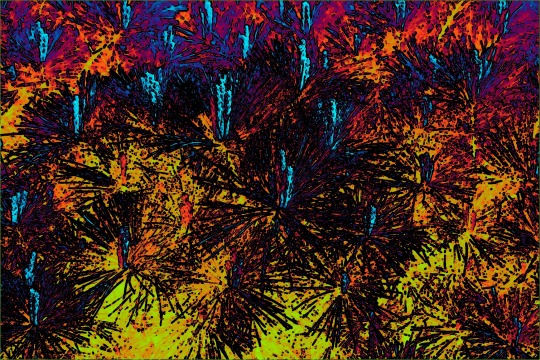#python 3
Text

This is part of a new project I am doing for a Facebook app that can alert someone when there is suspicious activity on their account, and block people who post rude comments and hate speech using a BERT model I am training on a dataset of hate speech. It automatically blocks people who are really rude / mean and keeps your feed clean of spam. I am developing it right now for work and for @emoryvalentine14 to test out and maybe in the future I will make it public.
I love NLP :D Also I plan to host this server probably on Heroku or something after it is done.
#machine learning#artificial intelligence#python programming#programmer#programming#technology#coding#python#ai#python 3#social media#stopthehate#lgbtq community#lgbtqia#lgbtqplus#gender equality
68 notes
·
View notes
Text

21 notes
·
View notes
Text
god. is anyone good with python 3. a class assignment for math is killing me here.
5 notes
·
View notes
Text

7 core Data science Python Libraries
3 notes
·
View notes
Text
Daisies

Playing with the Python 3 Pillow library (for image processing.) Wrote my own code to do the window placement and color transforms.
1 note
·
View note
Text
Building a Custom Image Classification Model for Handwritten Characters
In this blog, I have shared information on how to build a custom machine learning image classification model for recognising handwritten characters.
The Challenge of Handwritten Character Recognition
Recognising handwritten characters presents unique challenges. Unlike typed text, handwritten characters can vary widely in style, size, and form, even when written by the same person. To address…

View On WordPress
#Artificial Intelligence#Classification#CNN#coding#computer science#Devanagari#Handwritten#Image Classification#Jupyter#Machine Learning#Mnist#Python 3#Tensorflow
0 notes
Text
60% off all products, bundle and monthly, for all months of a given subscription. New enrollments only. September 1 - 8.
#courses#udacity#jobs#web design#data analytics#courses with certification#online courses#career#education#learn python#python#python for beginners#python tutorial for beginners#python 3#data science#dataanalysis#database engineer#data analysis#data scientist#data engineering#datascience#web developers#web development#javascript#project management#uxuidesign
0 notes
Text
Upgrade Python on Jetson Nano - Tutorial
If you have a Jetson running JetPack 4, you can upgrade your Python version from the default Python 3.6. Looky here:
Background
The current JetPack 4 release installs Jetson Linux 32.7. Jetson Linux is a variant of Ubuntu, in this case version 18.04 LTS. Each Ubuntu release has a group of Python releases. In this case, 18.04 has Python version 3.6, 3.7 and 3.8. This article covers the Jetson…

View On WordPress
#Jetson AGX Xavier#Jetson Nano#Jetson TX1#Jetson TX2#Jetson Xavier NX#Python 3#Python 3 Upgrade#Tutorial
0 notes
Text
How to print a document without a newline in Python?

How do you print in Python without newlines or line breaks? If you want to display a string without a break, use either a comma separator in Python 2.x or a terminal separator in Python 3.0.
Python prints all strings with newlines by default. Therefore, every print statement you use displays strings on newlines. Python provides several ways to print statements. Instead of writing on a new line, each statement can be displayed as an addition to the previous statement using print().
How to print in Newline in Python
The final function of the print() function must be used. This parameter is useful to add any character between the text.
End your printed statement with a comma. This adds space between text and commas.
Use the Sys module (no spaces between texts). Here are some quick examples of printing without strings attached.
Here are some quick examples of abbreviated printing:
# Print text without newlines (Python 3.x)
print(“Hello\”, end=\”\”)
print(\”Python tutorial\”)
# Display text without line breaks. # Use a space between each text.
print(“Welcome to \”, end=\”\”)
print(“Python tutorial”)
# Print text without newlines (Python 2.0x)
Print “Welcome to”
Print “Python tutorial.”
# Import the Sys module
import process
sys.stdout.write(“Welcome to\”)
sys.stdout.write(“Python tutorials”)
Printing Practice:
When you print a string in Python using the print function, any string output to the print function will be written on a new line. Here is an example:
This code produces the following console output:
#print a document without a newline#python eduaction#python tutorial#python web development#python 3
1 note
·
View note
Text
Predicting Alzheimer's With Machine Learning
Alzheimer's disease is a progressive neurodegenerative disorder that affects millions of people worldwide. Early diagnosis is crucial for managing the disease and potentially slowing its progression. My interest in this area is deeply personal. My great grandmother, Bonnie, passed away from Alzheimer's in 2000, and my grandmother, Jonette, who is Bonnie's daughter, is currently exhibiting symptoms of the disease. This personal connection has motivated me to apply my skills as a data scientist to contribute to the ongoing research in Alzheimer's disease.
Model Creation
The first step in creating the model was to identify relevant features that could potentially influence the onset of Alzheimer's disease. After careful consideration, I chose the following features: Mini-Mental State Examination (MMSE), Clinical Dementia Rating (CDR), Socioeconomic Status (SES), and Normalized Whole Brain Volume (nWBV).
MMSE: This is a commonly used test for cognitive function and mental status. Lower scores on the MMSE can indicate severe cognitive impairment, a common symptom of Alzheimer's.
CDR: This is a numeric scale used to quantify the severity of symptoms of dementia. A higher CDR score can indicate more severe dementia.
SES: Socioeconomic status has been found to influence health outcomes, including cognitive function and dementia.
nWBV: This represents the volume of the brain, adjusted for head size. A decrease in nWBV can be indicative of brain atrophy, a common symptom of Alzheimer's.
After selecting these features, I used a combination of Logistic Regression and Random Forest Classifier models in a Stacking Classifier to predict the onset of Alzheimer's disease. The model was trained on a dataset with these selected features and then tested on a separate dataset to evaluate its performance.
Model Performance
To validate the model's performance, I used a ROC curve plot (below), as well as a cross-validation accuracy scoring mechanism.
The ROC curve (Receiver Operating Characteristic curve) is a plot that illustrates the diagnostic ability of a model as its discrimination threshold is varied. It is great for visualizing the accuracy of binary classification models. The curve is created by plotting the true positive rate (TPR) against the false positive rate (FPR) at various threshold settings.

The area under the ROC curve, often referred to as the AUC (Area Under the Curve), provides a measure of the model's ability to distinguish between positive and negative classes. The AUC can be interpreted as the probability that the model will rank a randomly chosen positive instance higher than a randomly chosen negative one.
The AUC value ranges from 0 to 1. An AUC of 0.5 suggests no discrimination (i.e., the model has no ability to distinguish between positive and negative classes), 1 represents perfect discrimination (i.e., the model has perfect ability to distinguish between positive and negative classes), and 0 represents total misclassification.
The model's score of an AUC of 0.98 is excellent. It suggests that the model has a very high ability to distinguish between positive and negative classes.
The model also performed extremely well in another test, which showed the model has a final cross-validation score of 0.953. This high score indicates that the model was able to accurately predict the onset of Alzheimer's disease based on the selected features.
However, it's important to note that while this model can be a useful tool for predicting Alzheimer's disease, it should not be the sole basis for a diagnosis. Doctors should consider all aspects of diagnostic information when making a diagnosis.
Conclusion
The development and application of machine learning models like this one are revolutionizing the medical field. They offer the potential for early diagnosis of neurodegenerative diseases like Alzheimer's, which can significantly improve patient outcomes. However, these models are tools to assist healthcare professionals, not replace them. The human element in medicine, including a comprehensive understanding of the patient's health history and symptoms, remains crucial.
Despite the challenges, the potential of machine learning models in improving early diagnosis leaves me and my family hopeful. As we continue to advance in technology and research, we move closer to a world where diseases like Alzheimer's can be effectively managed, and hopefully, one day, cured.
#alzheimersresearch#alzheimersdisease#dementia#neurology#machinelearning#ai#artificialintelligence#aicommunity#datascience#datascientist#healthcare#medicalresearch#programming#python programming#python#python 3
54 notes
·
View notes
Text
WHY THE FUCK DOES THIS COMPUTER ONLY HAVE PYTHON 2?!
0 notes
Text
Top best platforms hosting python codes
python
Python is a versatile programming language that is popularly used for web development, data analysis, machine learning, and artificial intelligence. If you are a Python developer, you need a reliable platform to host your codes, collaborate with others, and manage your projects. In this blog post, we will discuss the top best platforms hosting Python codes.
GitHub
GitHub is one of the most…
View On WordPress
#как выучить python#learn python#learn python programming#уроки python#python#python 2020#python 3#python basics#python coding#python course#python crash course#python для начинающих#python for beginners#python for everybody#python for everyone#python from scratch#python full course#python language#python programming#python programming language#python programming tutorial#python tutorial#python tutorial for beginners
1 note
·
View note
Text
How Do I Create A Text File In Python?
Introduction
In python, Creating a new text file is a simple process using the built-in file handling function. Before creating a file we need to know about file handling function. file handling is a in-built method in python , which is used to handle different types of file operations like read , write, update, delete etc .
Know We have to see different types of file operations,
1. How do I create a text file in python?
Suppose we will create a text file exam.txt in python.( Read More)
#python#learn python#python tutorial#how to create excel files in python#how to create and add data to excel files in python#how to create a text file in python#python code to create a text file#python reading text files#python 3#create file with python#python program to create a text file#python text files#python to read text#text files in python#write a python program to create a text file#python read file#python writing text files#file handling in python#python programming
1 note
·
View note
Text
What is Booleans in Python
Booleans are a data type in Python used to represent either True or False. They are commonly used in conditions and control statements such as if statements, to control the flow of the program.
Here are a few examples to demonstrate the usage of Booleans in Python:
# Example 1: Checking equality
a = 5
b = 6
result = a == b
print(result) # Output: False
# Example 2: Evaluating conditions
x =…

View On WordPress
#booleans#booleans example#booleans in python#booleans in python example#python 3#what is booleans in python
0 notes
Text




A photo of a Mugo Pine tree in the spring, run through my own home brew Python 3 image processing software, to rather surrealistic results. NO AI software was used in the generation of these images, just my own mathematical manipulations of the underlying image.
0 notes
Text
#python#learn python#python tutorial#python for beginners#python course#python tutorial for beginners#python basics#python full course#learn python programming#python programming#python 3#python programming language#python language#python 2020#python crash course#python for everyone#python for everybody#python right now#python for hackers#python from scratch#python programming tutorial#уроки python#you need to learn python right now#python уроки#programing#coding
0 notes